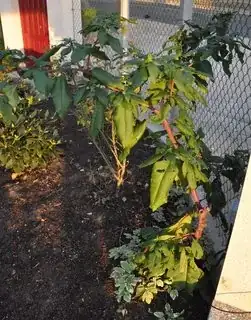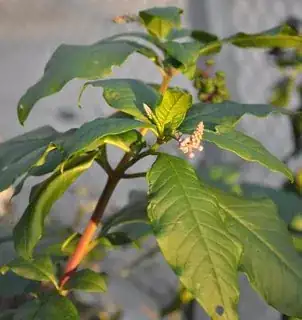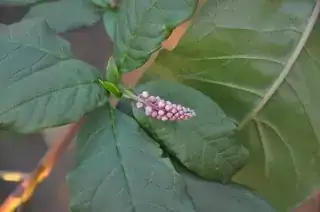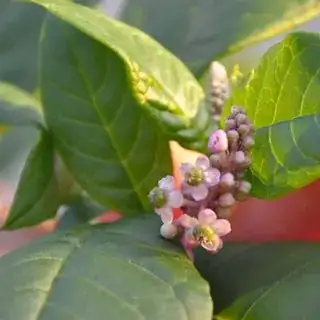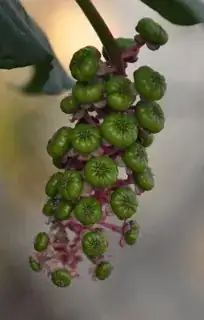In my garden a strange plant is growing at an incredible speed and I can't identify what kind it is. It broke through end of June and within two months it grew about 1.8-2.0m high. It now carries black/blue berries which produces a red juice upon squeezing them.
I assume birds were dropping the seed onto my garden.
I don't have a picture of the root (originally I had two of those plants, but I had to remove one as it was in the way). The root was quite impressive: 20-30cm long and 2-8cm in diameter in a form of a carrot colored in ocher. I think the two roots of the two plants were connected.
I'm located in France, in the Essonne departement (near Paris).
Here are some pictures (click to enlarge). The light green leaves in the first picture do not belong to this plant.
The whole plant Leafs and the flower before flowering
